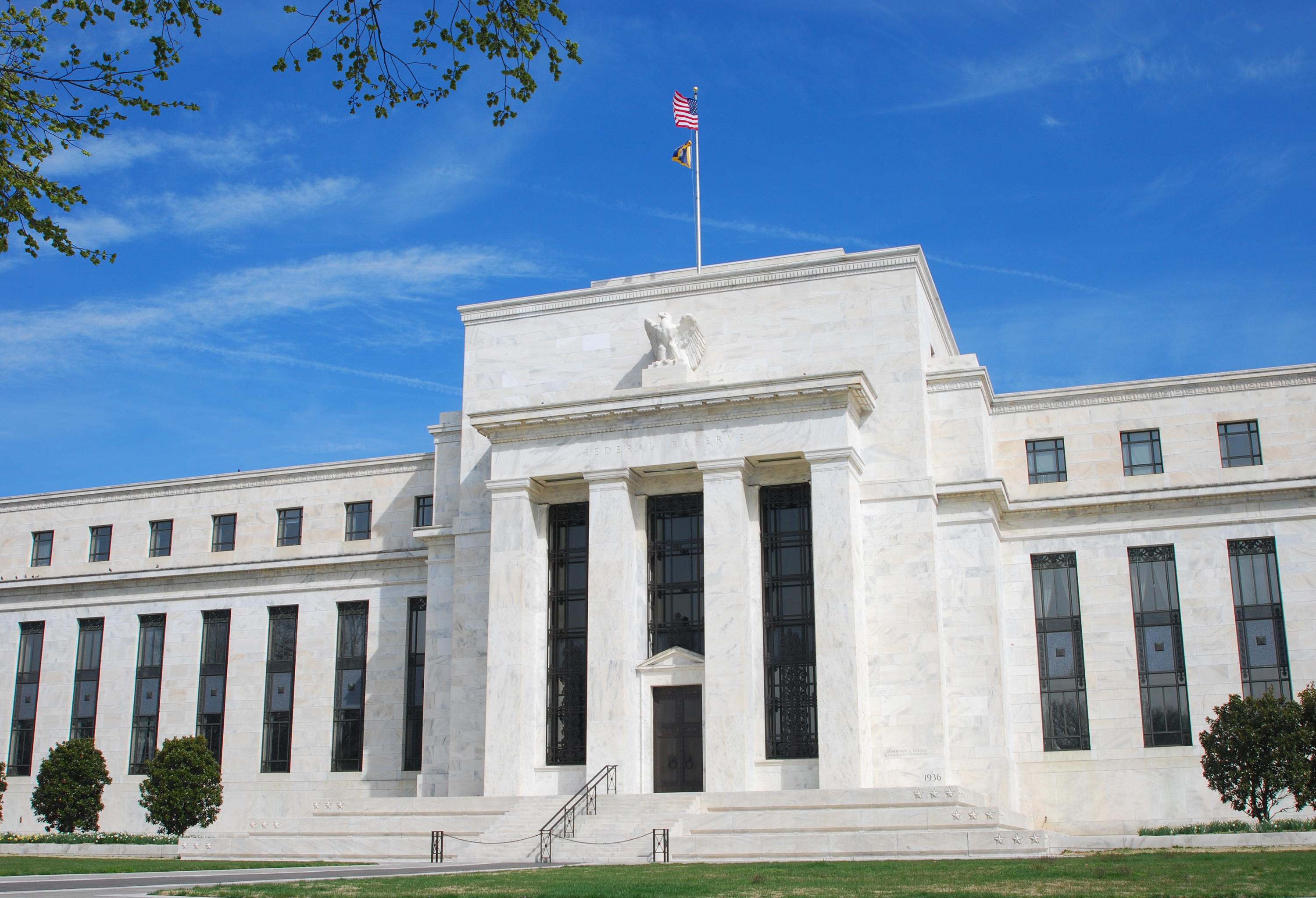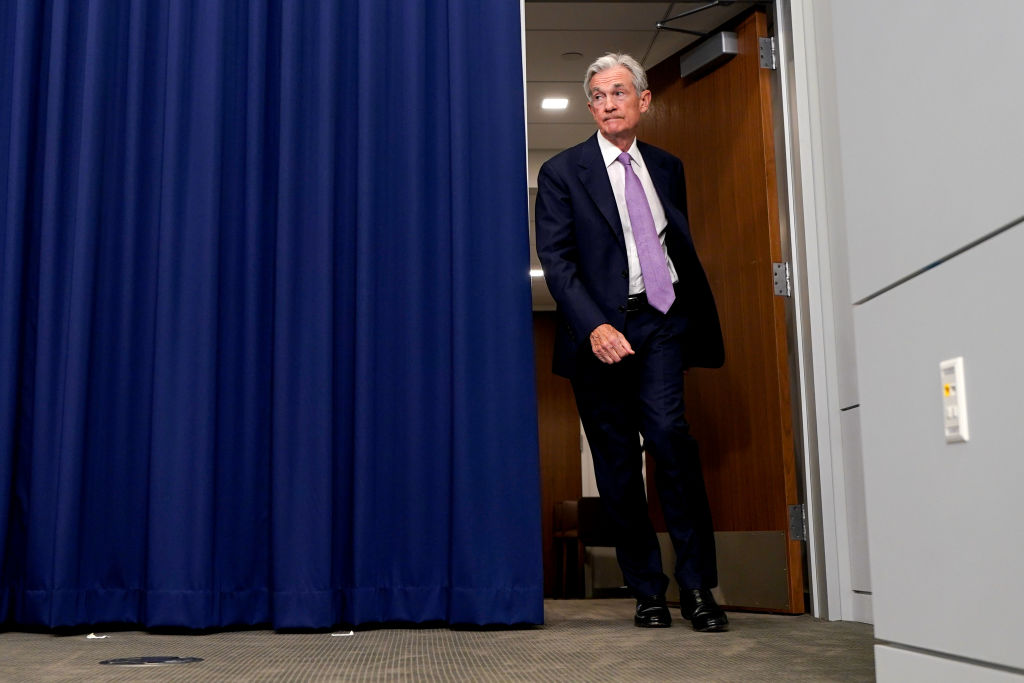The September meeting of the Federal Reserve is one of the most highly anticipated in recent memory. While expectations were high the Fed will cut rates, we didn't know by how much or at what pace easing will happen.
Post-pandemic inflation prompted the Fed to begin a series of rate hikes, driving the federal funds rate to a 23-year high. But about a year ago, the Fed stopped raising the rate, instead leaving it at that level. Since then, high-yield savings account rates and CD rates have been attractive, while mortgage rates have been frightening (especially when paired with rising house prices). More pertinently, in the meantime, inflation has cooled off.
This all set the stage for a rate cut, as the Fed and Chair Jerome Powell have been watching indicators to show the timing is right for inflation. The consensus was that we'll see a cut, by either 25 or 50 bps — and the Fed announced Wednesday afternoon, it's a 50 bps cut.
The meeting started Tuesday, the announcement was made Wednesday afternoon, and Powell went through his usual press conference facing plenty questions about the large rate cut.
Here, Kiplinger experts share the news and our analysis:
Advanced reading
In advance of the Federal Reserve meeting, here's more to read on the subject from Kiplinger:
Savings impact of Fed meeting
The high federal funds rate over the last 18 months or so has meant high rates for savers. Certificates of deposit (CDs), money market accounts and high-yield savings accounts have been in boom periods, with returns coming in at times over 5%.
Now, these financial tools certainly don't give the kinds of returns you find on the stock market. But they are safe. You are guaranteed the return you are promised, which is what makes them especially attractive with rising rates.
The products are also useful if you need more liquidity. CDs come with a set timeframe, so you pick for how long it will hold your money, while high-yield savings and money market accounts offer more flexibility to access your money whenever you need it. For that reason, a CD could be useful if you're planning to spend, like to buy a car in the spring or pay for a wedding in summer, while the other accounts are more useful for money you may use anytime, like for emergency funds or paying off credit card balances or rent.
In the lead-up to this Fed meeting, the Kiplinger personal finance team has examined what you should do with those accounts:
Early predictions for Fed meeting

With just a few hours to go until the Fed announcement, futures traders are pricing in a 61% probability that the central bank will cut rates by 50 basis points (0.50%) and 39% odds that it will lower the federal funds rate by 25 basis points (0.25%), according to CME Group's FedWatch Tool.
The August Consumer Price Index (CPI) report, which showed headline inflation fell to its lowest level in three years, all but confirmed the Fed will cut rates today, says Joe Gaffoglio, president and CEO at Mutual Of America Capital Management, However, Gaffoglio thinks today's cut will be by a quarter-percentage point, with "the possibility of at least one more this year."
John Lynch, chief investment officer for Comerica Wealth Management, is also in the quarter-point camp. "Inflation growth is not yet at the Fed's target for price stability, the unemployment rate still hovers around 4.0%, and federal deficit spending continues to surge," he says. But Lynch believes the central bank will follow up with 0.25% cuts at each of the next three or four Fed meetings.
- Karee Venema, senior investing editor
Kiplinger Letter expectations for today's Fed meeting
The economic data warrant a quarter-point rate cut today. It's hard to understand where the growing expectations for half a point have come from, but markets are betting on that as of now. This may be just the latest iteration of the pattern where Powell says, basically, "We're thinking about cutting rates a bit," and Wall Street hears, "Huge rate cuts coming? Great!"
You may recall that coming into this year, markets were betting on roughly six quarter-point cuts, whereas Powell and other Fed officials had hinted at roughly half of that.
- Jim Patterson, managing editor, Kiplinger Letter
The stock market prepares for the Fed announcement
On Tuesday, stocks neared all-time highs as investors awaited the expected rate cut.
On Wednesday, stocks are choppy as investors look ahead to this afternoon's Fed announcement. At midday, the Dow Jones Industrial Average, S&P 500 and Nasdaq Composite were all slightly lower.
- Karee Venema, senior investing editor
What time is the Fed rate decision announced?

The Federal Open Market Committee (FOMC) began meeting yesterday. Their meeting concludes today, and the policy decision will be released at 2 pm Eastern Time.
Later, at 2:30 pm, Chair Jerome Powell will hold a press conference. Keep in mind that the press conference is typically more closely watched than the announcement, since people look for hints at what's to come in the future.
Fed meeting livestream
The Federal Reserve has a press conference upcoming at 2:30 pm ET. Here is the livestream link.
Fed announces rate cut
The Fed cut short-term interest rates by a half point today, bringing the federal funds rate down to 4-3/4% from 5-1/4%. This is expected to be the first of a number of cuts, extending through next year.
The first cut was larger than expected, but future cuts are likely to be only a quarter point at a time unless the Fed fears there is danger of recession. The next policy move at its November 7 meeting will show how fast the Fed intends to cut further.
It will be interesting to see how Chair Powell explains this large cut at the 2:30 press conference.
- David Payne, staff economist, Kiplinger Letter
Markets' immediate reaction to rate cut
Markets appear to be rising in the immediate aftermath. I would not be shocked if they jump around a lot in the next couple hours.
- Jim Patterson, managing editor, Kiplinger Letter
Questions about the size of the rate cut
I am a little surprised by the half-point cut, even though we knew the odds favored it. This feels more like a sop to Wall Street than a data-driven decision.
- Jim Patterson, managing editor, Kiplinger Letter
It's also possible that Powell decided they had waited too long, and made a larger cut to get the ball rolling. But I don't think he'll do it again. We'll see what he says at the press conference for more clues.
- David Payne, staff economist, Kiplinger Letter
What does the Fed rate cut mean for the economy?
Short-term interest rates will move down by a half-point. That is large enough to notice for many borrowers, and may provide a small boost to car and home sales. Thirty-year mortgage rates should drop below the psychologically significant 6% threshold. Short-term loans to businesses and consumers will cost less, which could encourage a bit more spending and investing across the economy.
But, by the same token, savers will be dinged as rates on CDs, money market funds and savings account decline. Pension funds won’t be able to earn as much interest on their bond portfolios, and so may have to commit more money upfront to meet their future payout obligations.
There is no sign of a recession or other obvious reason to worry — yet the Fed just made a pretty strong move to aid the economy. Here's what the Kiplinger Letter team feels about if you should worry about the economy.
- David Payne, staff economist, Kiplinger Letter
Powell begins press conference

At 2:30 pm, Powell began his customary press conference. He is currently reviewing prepared remarks.
The chair wants to signal that the Committee has "growing confidence" in the ability of inflation to come down. The labor market is no longer a source of inflationary pressures.
Powell sees risks as balanced, now. No explanation yet for the size of the cut, other than "confidence."
- David Payne, staff economist, Kiplinger Letter
Powell begins taking questions
The first question (really, which included several questions in one), addressed the size of the cut.
In response, Powell said "it was the right things to do." I would guess the Bureau of Labor Statistics report announcing downward revisions to previous employment numbers played a role in the larger cut.
He is also making no promises of large cuts in the future.
- David Payne, staff economist, Kiplinger Letter
Stock market reacts as Powell talks
Small-cap stocks are leading the charge higher on Wall Street as Fed Chair Powell speaks. At last check, the Russell 2000 is up 1.6% vs 0.4% gains for the Dow and S&P 500. The Nasdaq is 0.8% higher.
- Karee Venema, senior investing editor
Powell keeps his options open in answers
While answering questions about the size of this rate cut and what we can expect in the future, Powell is keeping his options open, saying, "We'll move as fast or as slow as is appropriate at that time."
He indicated the size of the cut came because "we made a good, strong start because of our confidence" that inflation is coming down, and they "wanted to keep the labor market in good condition.
Regarding the Fed's Summary of Economic Projections, Powell noted that "all 19 of the participants wrote down multiple cuts this year," That marks a big change from June's SEP, he added.
Powell is discouraging people from assuming the fast cutting place will continue. He still emphasizes a gradual approach.
- David Payne, staff economist, Kiplinger Letter, and Karee Venema, senior investing editor
Powell rejects thoughts of politics
Asked how he'd respond to claims the Fed made this rate cut to somehow influence the 2024 election, Powell states all decisions are made based on "what's the right thing to do for the people we serve" and "nothing else is discussed."
"We serve the American people. We don't take anything else into consideration," he says.
Powell adds that what the Fed does typically has a lag before impacting the economy.
Regarding the labor market
The current unemployment rate is healthy by historical standards and participation is high, Powell says. Wage increases are a bit above where they would be over the longer term to be consistent with 2% inflation, though they are coming down. Vacancies per unemployed are still pretty good and quits are down to normal levels.
The upside risks have been lowered, but the downside risks to employment are up. However, because the Fed waited to cut rates, Powell feels the central bank is now in a good position to handle these risks.
- Karee Venema, senior investing editor
Powell addresses housing market, inflation
During the question period of the press conference, Powell answered questions about the housing market and inflation — points that impact most Americans.
Discussing if the housing market will unlock now that there is a rate cut, which should lead to lower mortgage rates, Powell says: "The housing market is frozen because current homeowners are locked into low mortgage rates, so there is not enough supply. As we normalize rates, it will help the housing market. But increasing the supply of new homes is out of our ability."
He also answered a question about Americans' frustration over inflation, like high prices they encounter in their daily lives. In response, Powell explained the country faced "a burst of inflation," as did many other countries around the world, and the Fed did what it did (raised rates, paused, and waited to make a cut) in the name of long-term price stability, even if it's not a pleasant process to get there.
"At the end, what you get is low inflation restored, price stability restored," he says.
Ultimately, the goal is that "people in their daily decisions, they're not thinking about inflation anymore," he says, adding that "a good definition of price stability is when people are not taking inflation into account in their daily decisions."
Further reading: Should You Refinance Your Mortgage Now That the Fed Just Cut Rates?
Powell wraps up press conference
And with that, the Fed press conference is done.
Powell did his job. He managed to make the large cut appear to be an ordinary, sound decision without sounding panicky on the economy. He also kept expectations for the future within bounds by emphasizing the Fed's commitment to gradualism. Still, a bold move less than two months before a presidential election was an act of political courage.
- David Payne, staff economist, Kiplinger Letter
You can see the livestreamed Fed press conference here:
Expert opinion on the Fed rate cut
While a cut was expected, the Fed went with the surprisingly higher option of a half-percentage point. As inflation continues to recede, there seem to be signs of concern about the health of the labor market.
At the following link, we take a look at what the experts are saying about the Fed rate cut.
Why did the Fed make a larger-than-expected cut today?
Chair Powell offered three reasons during the press conference:
- “We made a good, strong start because of our confidence (that inflation is coming down).”
- “We wanted to keep the labor market in good condition.”
- "The size of the cut is a sign of our commitment not to get behind."
Certainly, a large first cut followed by smaller ones in the future will be judged to be reasonable. And Powell is correct that inflation has been trending down, and there have been signs of modest weakening in the labor market.
But, while these likely had an influence, it seems that Powell is also still smarting from the criticism the Fed received back in 2022 when they were late to raise interest rates to fight inflation in the first place, and he is determined not to be late on the downside as well.
- David Payne, staff economist, Kiplinger Letter
How the stock market reacted to the Fed rate cut
The main indexes made a confident move higher after the central bank cut rates by a half-percentage point, but late-day selling pressure sent them into the red at the close.
The Dow Jones Industrial Average finished Wednesday down 0.3% at 41,503, the S&P 500 fell 0.3% to 5,618, and the Nasdaq Composite shed 0.3% to 17,573. The Russell 2000, however, held on for a modest gain.
- Karee Venema, senior investing editor
